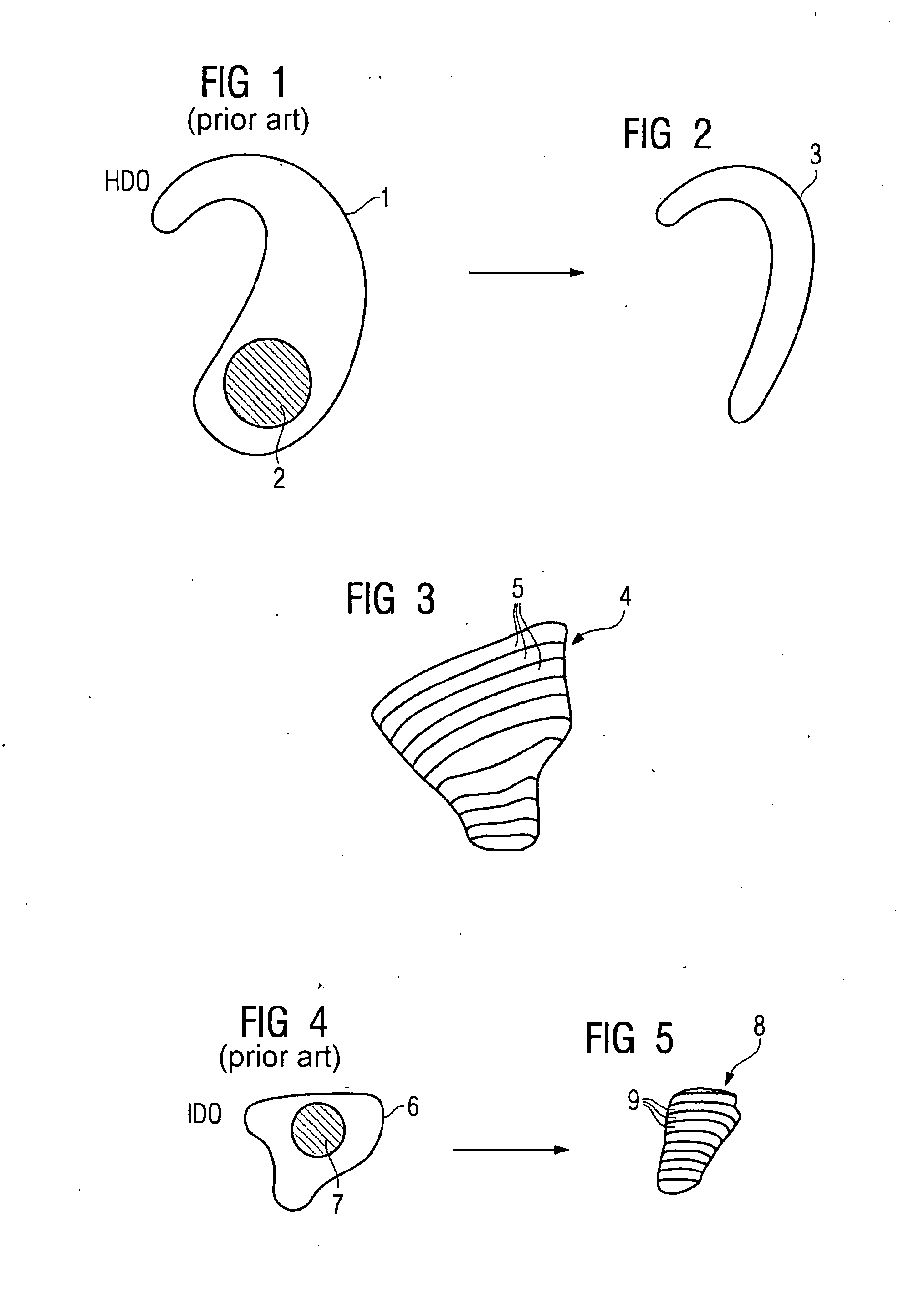Hearing apparatus with special power source
a power source and power supply technology, applied in the field of hearing apparatuses, can solve the problems of battery replacement, battery occupying a relatively large amount of space, and often extraordinarily difficult battery replacemen
- Summary
- Abstract
- Description
- Claims
- Application Information
AI Technical Summary
Benefits of technology
Problems solved by technology
Method used
Image
Examples
Embodiment Construction
[0025] The exemplary embodiments described in greater detail below represent preferred embodiments of the present invention.
[0026]FIG. 1 first shows a conventional-design BTE in a schematic diagram. The housing 1 consists of injected plastic or a lithographically produced plastic body. In the housing is an unseen hearing aid battery 2 which is indicated symbolically in FIG. 1 to illustrate its size. The battery 2 occupies appr. 15% to 30% of the interior space of the hearing device housing 1.
[0027] The invention now makes provision for relocating the battery out of the BTE. This allows a BTE to be made using the design shown in FIG. 2. This BTE possesses a significantly slimmer housing 3 since it does not have to accommodate a battery. This means that wearing it in concha, but also behind the ear is possible.
[0028] The battery is integrated into a otoplastic similar to that shown in FIG. 3. In principle a conventional button cell can be accommodated in the otoplastic. The power i...
PUM
 Login to View More
Login to View More Abstract
Description
Claims
Application Information
 Login to View More
Login to View More - R&D
- Intellectual Property
- Life Sciences
- Materials
- Tech Scout
- Unparalleled Data Quality
- Higher Quality Content
- 60% Fewer Hallucinations
Browse by: Latest US Patents, China's latest patents, Technical Efficacy Thesaurus, Application Domain, Technology Topic, Popular Technical Reports.
© 2025 PatSnap. All rights reserved.Legal|Privacy policy|Modern Slavery Act Transparency Statement|Sitemap|About US| Contact US: help@patsnap.com


